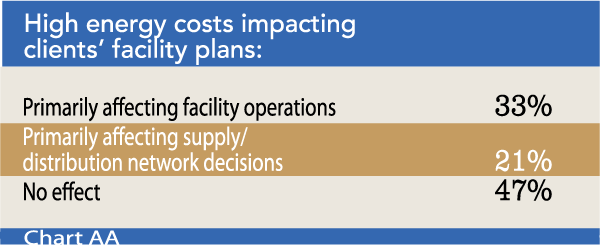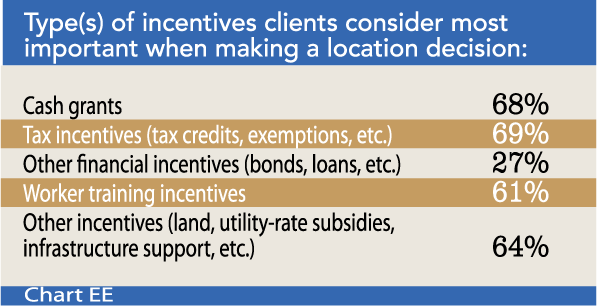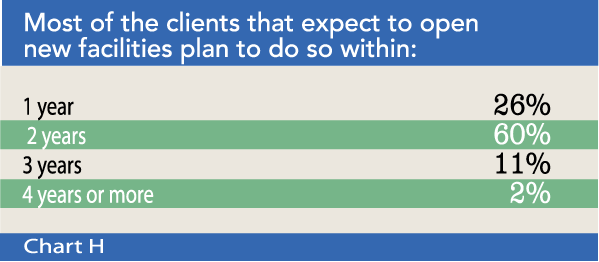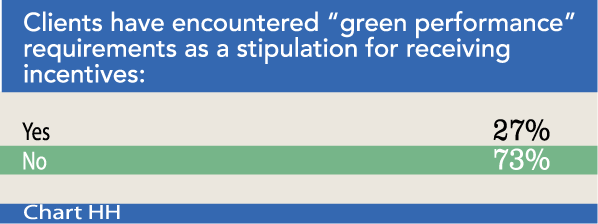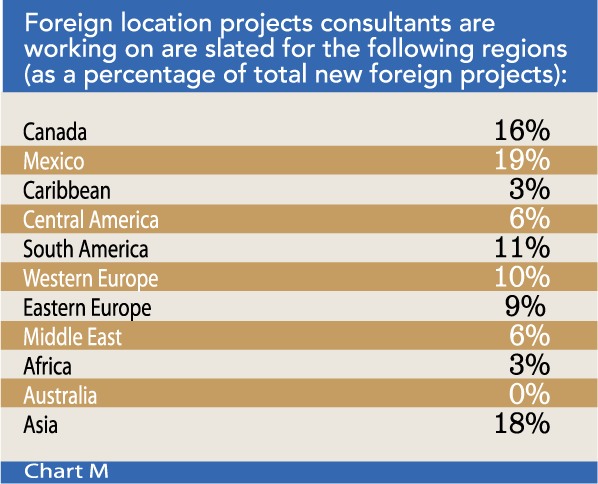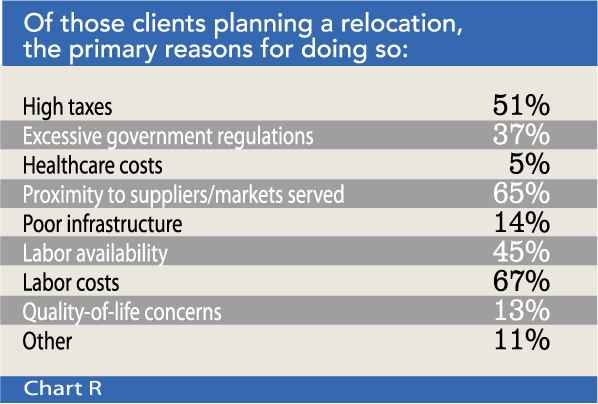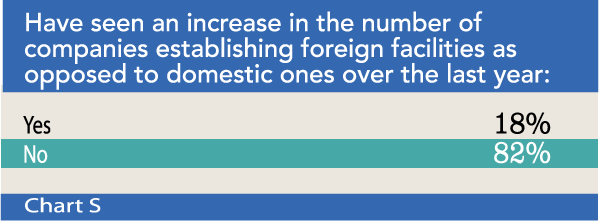Slightly more than half of those responding to our 10th annual Consultants Survey say they work with durable goods manufacturers as well as distribution/logistics/warehousing firms. Nearly 40 percent also claim to work with nondurable goods manufacturers, and more than 20 percent have also been engaged in location and expansion projects for the financial services/insurance/real estate; data processing, software, and computer-related services; and life sciences and energy industries (Chart A).
About three quarters of the responding consultants say they provide their clients with location studies/comparative analyses as well as help with the site selection decision. Their other primary role is incentives negotiation and management, as per 69 percent of the respondents (Chart B).
The responding consultants’ clients are of varying sizes in terms of employment numbers. About a third say they work with companies having fewer than 100 employees, but 40 percent also say they work with firms that employ 1,000 or more people (Chart C).

Half of the respondents say that most of the clients who ask them to perform a location search have already gathered preliminary data and narrowed down the geographic area in which they wish to locate. Only 25 percent say their clients expect them to make the location decision on their behalf (Chart E).
When asked about the effects of the slow economic recovery on their clients’ facility plans, the respondents to our Consultants Survey are very optimistic — more than half say their clients still plan to open new facilities/expand (Chart F), as compared to just 20 percent of the Corporate Survey respondents who gave that answer. Additionally, the responding consultants are slightly more confident the economy will achieve a more continuous growth track this year than the respondents to our Corporate Survey: 48 percent of the consultants say so (Chart G), whereas just 40 percent of the corporate respondents believe this will happen.
Clients’ Projections for New Facilities/Expansion/Relocation
A quarter of the respondents to our 10th annual Consultants Survey say their clients who plan to open facilities expect to do so within one year, while 60 percent say their clients have two-year plans (Chart H). The majority (62 percent) say their clients will open just one new domestic facility (Chart I).
Of the total new domestic projects with which the responding consultants are involved, 17 percent are slated for the South (Alabama, Florida, Georgia, Louisiana, Mississippi) and 14 percent for the Midwest (Illinois, Indiana, Michigan, Ohio, Wisconsin) (Chart J). These are about the same percentages cited by our Corporate Survey respondents. However, the consultants are working on greater percentages of projects than those planned by the corporate respondents for the South Atlantic (North Carolina, South Carolina, Virginia, West Virginia) — 14 percent of the consultants vs. 11 percent of the corporate respondents — and for the Southwest (Arizona, New Mexico, Oklahoma, Texas) — 15 percent of the consultants vs. 11 percent of the corporate respondents.

The greatest percentages of the projects being worked on by the responding consultants are in Mexico (19 percent), Asia (18 percent), and Canada (16 percent) (Chart M). The Corporate Survey respondents are planning fewer of their total foreign facility projects for these regions and more for South America, with 20 percent planned by the Corporate Survey respondents but representing only 11 percent of the projects with which the consultants are involved.
When it comes to Asia, 35 percent of those Asian projects assisted by the consultants will go to China, 18 percent to India, and 15 percent to Malaysia (Chart N), more than twice the percentage the corporate respondents plan for Malaysia.
The responding consultants say about 40 percent of their new foreign facilities will house manufacturing operations and 15 percent will be warehouse/distribution facilities (Chart O).
Nearly 60 percent of those responding to our Consultants Survey claim that their clients who have expansion plans will execute them within two years (Chart P). And about half say their clients who plan to relocate facilities also have plans two years out (Chart Q).

Nearly a fifth of the consultants claim to be seeing an increase in the number of companies establishing foreign facilities as opposed to domestic ones (Chart S). And while only 3 percent of the Corporate Survey respondents say they expect to locate a foreign operation back to the U.S., one third of the consultants say their clients have re-shored operations. About half these consultants say this is a result of rising foreign labor costs and costs of transporting supplies/products as well as product quality issues (Chart T).
Why aren’t the consultants’ clients spending more of their earnings on U.S. facilities? More than 60 percent say it’s because of economic instability in the United States; more than half cite high corporate taxes; and about two fifths are concerned about excessive government regulations, including the impact of new healthcare regulations under the Affordable Care Act (Chart U). Our Corporate Survey respondents voice similar concerns.
Next: Factors Influencing Clients’ Location Decisions

